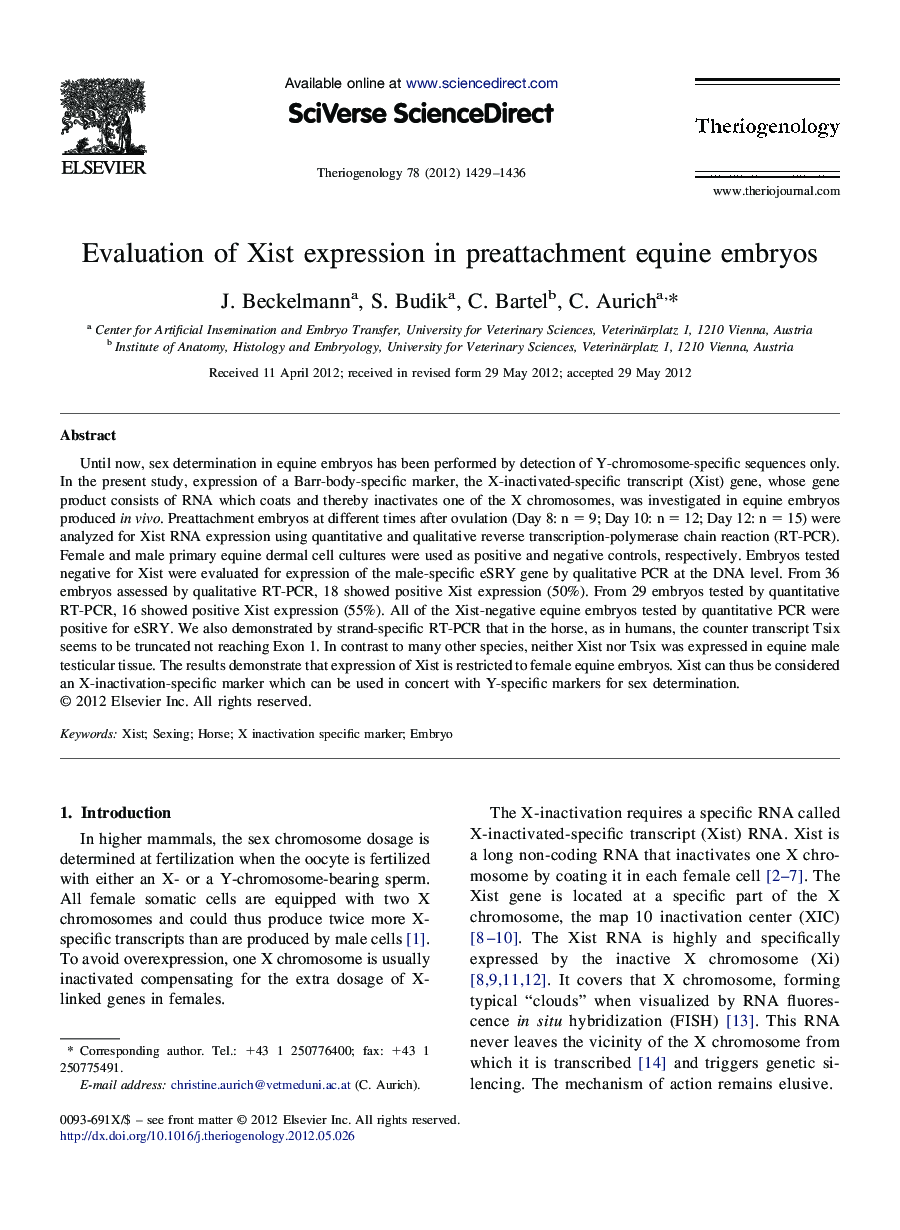| کد مقاله | کد نشریه | سال انتشار | مقاله انگلیسی | نسخه تمام متن |
|---|---|---|---|---|
| 10892623 | 1082111 | 2012 | 8 صفحه PDF | دانلود رایگان |
عنوان انگلیسی مقاله ISI
Evaluation of Xist expression in preattachment equine embryos
دانلود مقاله + سفارش ترجمه
دانلود مقاله ISI انگلیسی
رایگان برای ایرانیان
کلمات کلیدی
موضوعات مرتبط
علوم زیستی و بیوفناوری
علوم کشاورزی و بیولوژیک
علوم دامی و جانورشناسی
پیش نمایش صفحه اول مقاله

چکیده انگلیسی
Until now, sex determination in equine embryos has been performed by detection of Y-chromosome-specific sequences only. In the present study, expression of a Barr-body-specific marker, the X-inactivated-specific transcript (Xist) gene, whose gene product consists of RNA which coats and thereby inactivates one of the X chromosomes, was investigated in equine embryos produced in vivo. Preattachment embryos at different times after ovulation (Day 8: n = 9; Day 10: n = 12; Day 12: n = 15) were analyzed for Xist RNA expression using quantitative and qualitative reverse transcription-polymerase chain reaction (RT-PCR). Female and male primary equine dermal cell cultures were used as positive and negative controls, respectively. Embryos tested negative for Xist were evaluated for expression of the male-specific eSRY gene by qualitative PCR at the DNA level. From 36 embryos assessed by qualitative RT-PCR, 18 showed positive Xist expression (50%). From 29 embryos tested by quantitative RT-PCR, 16 showed positive Xist expression (55%). All of the Xist-negative equine embryos tested by quantitative PCR were positive for eSRY. We also demonstrated by strand-specific RT-PCR that in the horse, as in humans, the counter transcript Tsix seems to be truncated not reaching Exon 1. In contrast to many other species, neither Xist nor Tsix was expressed in equine male testicular tissue. The results demonstrate that expression of Xist is restricted to female equine embryos. Xist can thus be considered an X-inactivation-specific marker which can be used in concert with Y-specific markers for sex determination.
ناشر
Database: Elsevier - ScienceDirect (ساینس دایرکت)
Journal: Theriogenology - Volume 78, Issue 7, 15 October 2012, Pages 1429-1436
Journal: Theriogenology - Volume 78, Issue 7, 15 October 2012, Pages 1429-1436
نویسندگان
J. Beckelmann, S. Budik, C. Bartel, C. Aurich,